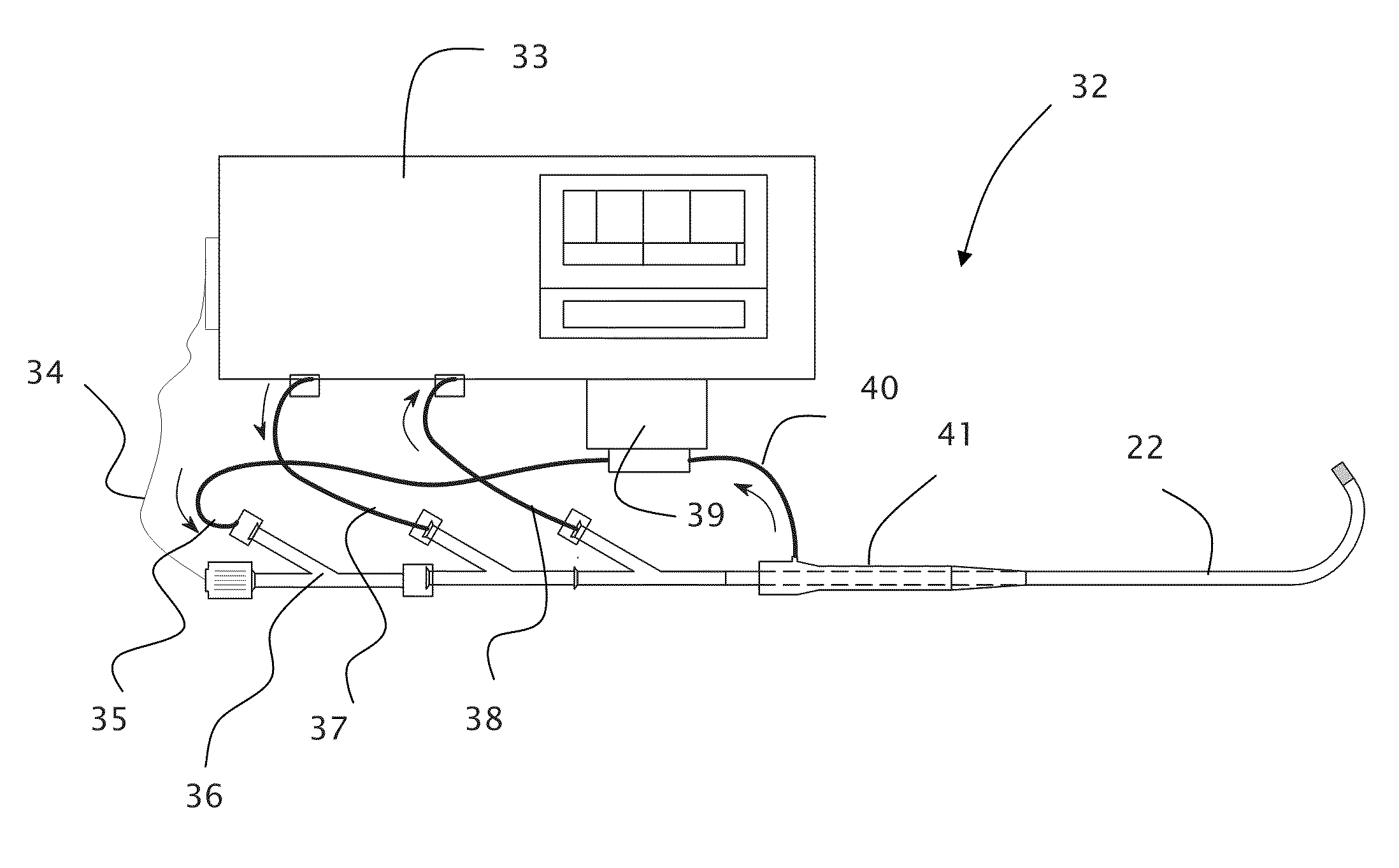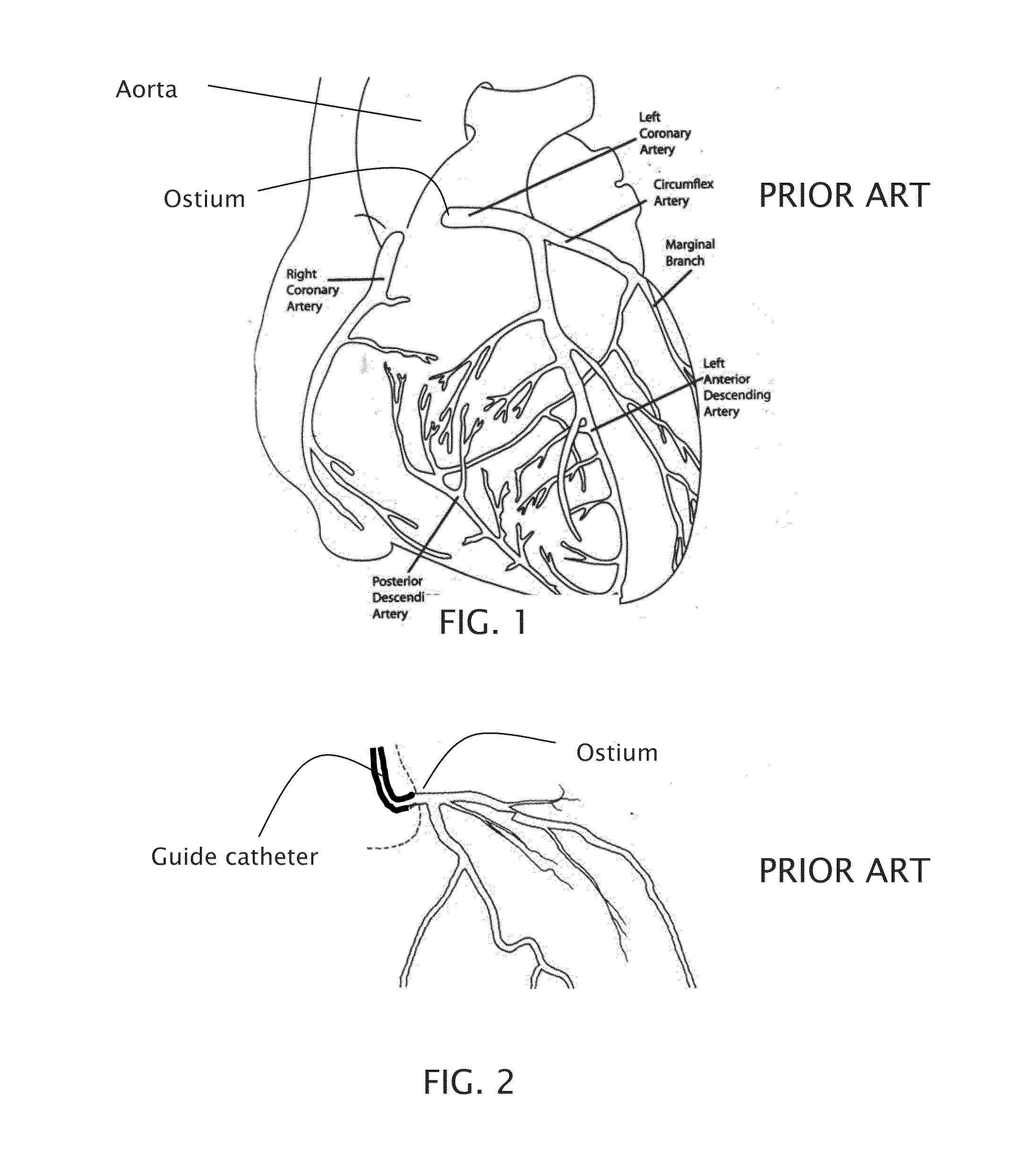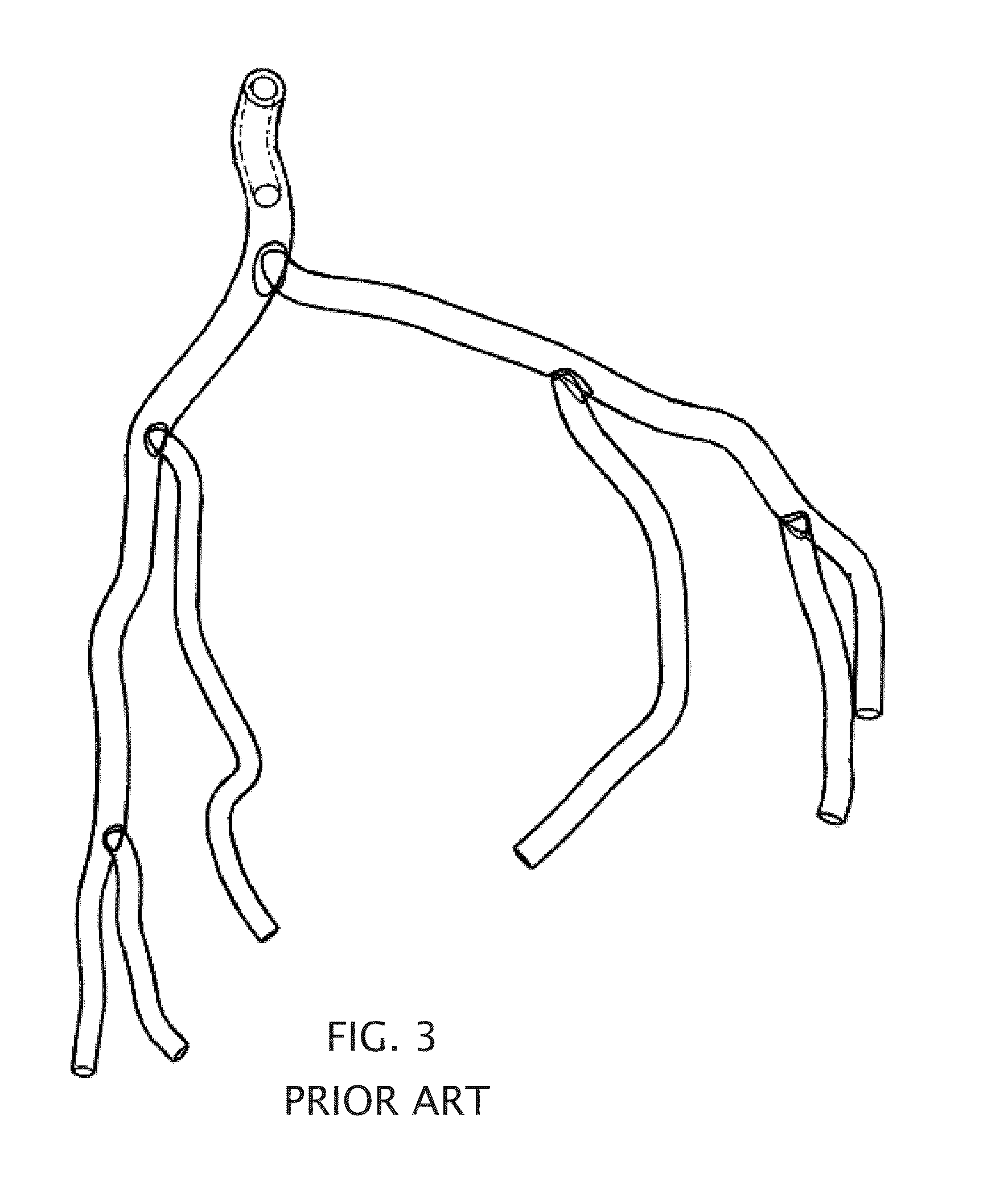Cooling Guide Catheter And Associated Method Of Use
a technology of cooling catheter and guide catheter, which is applied in the field of cooling catheter medical devices, can solve the problems of lingering heart damage, microvascular and endothelial injury, and myocyte damage through myocardial stunning, and achieve the effects of reducing flow-limiting wall drag, reducing near-wall viscosity, and improving cooling catheter blood flow performan
- Summary
- Abstract
- Description
- Claims
- Application Information
AI Technical Summary
Benefits of technology
Problems solved by technology
Method used
Image
Examples
Embodiment Construction
[0078]The following detailed description illustrates the invention by way of example and not by way of limitation. The description enables one skilled in the art to make and use the present disclosure, and describes several embodiments, adaptations, variations, alternatives, and uses of the present disclosure, including what is presently believed to be the best mode of carrying out the present disclosure.
[0079]Turning to the figures, is can be seen that FIG. 1 through FIG. 3 shows the physiological landscape where embodiments of the present invention can be used. FIG. 1 shows a drawing of the major arteries of the heart. The coronary arteries (as seen in FIGS. 1-3) have proximal inner diameters ranging from 1.5 to 4.0 mm and length ranging from 2-4 cm. These arteries taper down in the direction of blood flow. FIGS. 2 and 3 show proximal and full engagement of a conventional guide catheter in the left main coronary artery, respectively. The large arteries carry out bulk transport of ...
PUM
| Property | Measurement | Unit |
|---|---|---|
| inner diameter | aaaaa | aaaaa |
| inner diameter | aaaaa | aaaaa |
| inner diameters | aaaaa | aaaaa |
Abstract
Description
Claims
Application Information
 Login to View More
Login to View More - R&D
- Intellectual Property
- Life Sciences
- Materials
- Tech Scout
- Unparalleled Data Quality
- Higher Quality Content
- 60% Fewer Hallucinations
Browse by: Latest US Patents, China's latest patents, Technical Efficacy Thesaurus, Application Domain, Technology Topic, Popular Technical Reports.
© 2025 PatSnap. All rights reserved.Legal|Privacy policy|Modern Slavery Act Transparency Statement|Sitemap|About US| Contact US: help@patsnap.com



